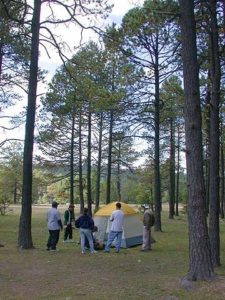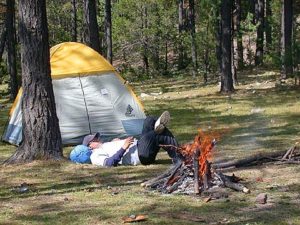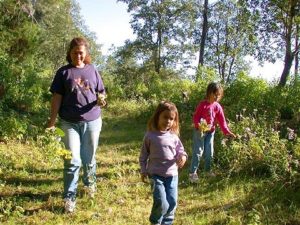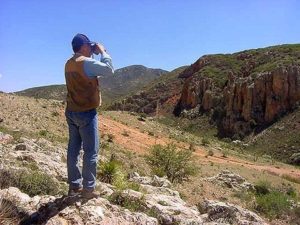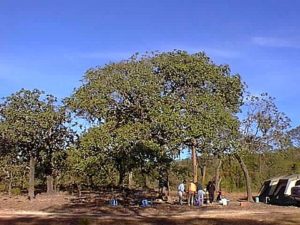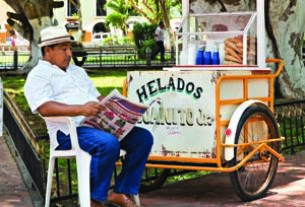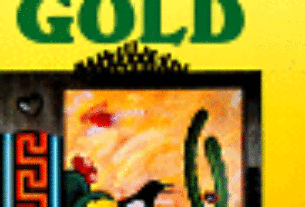Much of what makes camping in Mexico intriguing and even mysterious also makes it challenging: It’s easy to disappear from the mapped highways and become emerged in the Chihuahuan Desert or the Sierra Madre Occidental, but a smooth and safe trip can be anywhere from difficult to impossible without careful planning and preparation. Even so, Mexico offers some of the Americas’ most wonderful camping opportunities, and the prepared camper will surely take home a lasting memory. Here are a few tips to make your camping trip a successful one.
1. Plan to camp under any conditions.
One night’s camp might be located on a ridge overlooking a desert arroyo, and the next in a snowy temperate pine forest. Also, remember that Mexican weather can be unpredictable, with tropical storms and highly variable topography creating surprises for even experienced campers. David Eidell Even’s ( “Thumbnail Guide to Mexican Climate”) provides some good tips to help weather the weather in Mexico. Even on carefully planned trips, vehicle problems, road conditions, and other surprises often force campers to adjust camping plans. Planning should include alternatives and space for flexibility. On a recent trip to Chihuahua, new barbed wire fences along highway right-of-ways surprised me, and we had to use a highway borrow pit as a gravelly campsite for one night.
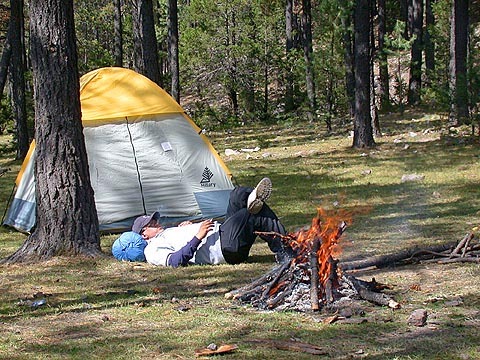
2. Pack basic camping gear and supplies.
Organize basic camping gear (see the linked “Checklist of Basic Camping Gear” and, below, other hypertext links to other checklists) first, and think about the details, such as spare parts for tents or gas stoves, in the meantime. Buy things like camp stove valves, lantern mantles, unusual batteries, your favorite chocolate bar, and other specialized items long before your trip. Shopping at the last minute in unfamiliar Mexican cities, as delightful as it can be, is rarely efficient.
3. Pack clothing to dress in layers.
Camping veterans dress in layers to permit them to adapt to changing weather conditions. A hot, muggy afternoon in mountain terrain can turn quickly into a cold, frosty evening. Wool is an excellent choice for outdoor clothing because it both breathes and insulates, even when wet. Cotton is best for cool days, when sun, insect, and light breeze protection are important. Good boots are a must.
4. Keep toiletries simple and biodegradable.
In Mexico, primitive camping is the norm, so expect to bathe with water you’ve hauled in, in rivers, or, in a pinch, in a puddle. Put together a basic toiletry kit, and share group items, like shampoo, hand soap, and toilet paper to save room. Use biodegradable products, if possible, to help reduce your impact while on the camping trail.
5. Pack an emergency kit.
Consider items you might need in case of an accident, sickness, overextending your planned stay, or getting lost, and make an emergency kit. It should be portable, lightweight, and manageable so you’re not tempted to stuff it in the trunk and leave it on hikes or a long walk to the gas station. Your first aid kit should be part of the emergency kit to assure that it stays on hand anytime you’re away from you’re vehicle or campsite.
6. Plan simple meals centered on non-perishable food items.
Think carefully about where and when you’ll make purchases, and leave plenty of time for shopping before heading into the field. Convenience stores are only recently appearing in Mexico’s interior, and tienditas de abarrotes (country grocery stores) in smaller towns and villages often won’t even have basic things, like ice, coffee grounds, and toilet paper. Plan on non-perishable items after the first few days, just in case you don’t find ice on the way into camp. Put together a simple mess kit, and plan meals that are well balanced and designed to meet your group’s special cooking tastes and needs. I’ve found that flexible vegetarians make great travel partners in Mexico because most of their food can be transported without refrigeration, and those who’ve traveled with me are excellent chefs!
7. Keep travel documents in a safe, dry place.
Travel documents, like your passport, tourist card (or other migratory status document), and vehicle title, are difficult to replace if damaged or lost. Place them in a waterproof bag and guard them carefully.
8. Learn and use Spanish.
Except in the larger cities with an extensive tourism economy, you’ll need to speak Spanish to get things done. Almost anywhere in Mexico, Spanish is the predominant language, and Mexicans appreciate efforts by foreigners to use their language. If you’re just learning, get a good Spanish dictionary, and work with it.
- “Learning Spanish In Mexico (and other Countries too!)”
- Carl Franz’ “Learning Spanish – Book Reviews”
- Alan Cogan’s “Learning Spanish by Immersion — Does It Work?”
- Thom McDonald’s “Helpful Hints on Learning Mexican Spanish”
9. Use caution and respect when dealing with the local population.
Whenever possible, obtain permission to camp, and practice low-impact camping techniques and safe fire handling practices. Pastors, cowboys, restaurant owners, local travelers, and even squatters have given me and my traveling companions helpful advice and accommodating assurance when we’ve asked for permission to camp. However, as with any situation in foreign travel, be careful who you talk to and what you say. Travel safety experts advise travelers to keep a low profile and to avoid flashing money or high-tech equipment in public places. Most foreigners stand out in Mexico, and rural Mexicans are sharp observers when it comes to strange faces. The U.S. Department of State offers a page entitled “Tips for Travelers to Mexico” with several useful links to articles on specific topics. This page is mirrored in Access Mexico Connect at U.S. Department of State Travelers’ Tips .
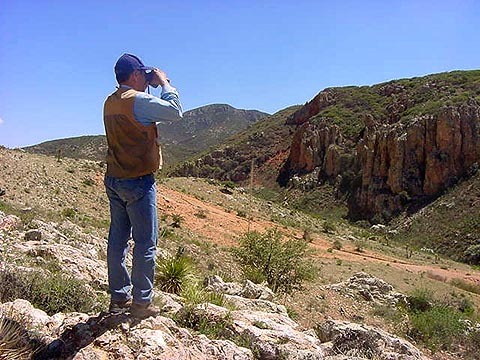
10. Don’t drink the water.
Bring plenty of water from a reliable source. Buy bottled water, or treat tap water. Plan on using about 2.5 – 7.5 L, or 1 – 3 gallons, per day per person. Microscopic flora vary from region to region, and traveler’s diarrhea is a common and uncomfortable consequence. Also, be careful with food. Try to limit purchased meals to clean restaurants with running water, and be sure to carefully wash and cook meals you prepare in the field.
11. Know your vehicle.
Vehicle breakdowns can quickly turn a weekend jaunt across the border into a long and tiring trip. Learn how to detect and deal with minor vehicle problems, such as flat tires, broken belts, discharged batteries, radiator hose leaks, fuel pump failure, blown fuses, and temperamental car alarms. Have spare parts on hand, and consider including an illustrated repair manual in your vehicle tool kit. One can also find excellent tips on vehicle problem diagnosis and repair by referring to web pages like the Tom and Ray’s Car Talk page (https://www.cartalk.com/). A vehicle emergency and repair kit is a must when traveling in the Mexican wilderness.
Related article: A Mexican Travel Tool Kit from the Sierra Madre Mechanic
12. Know yourself and your travel partners.
Just as our vehicles require routine maintenance and occasional heavy duty mechanical attention, we, as human beings also have certain health and psychological needs. When camping in Mexico, be on the look out for subtle warnings to health problems and stress. Are you or someone in your group abnormally tired or irritable? Do you find a normally talkative friend being exceptionally quiet. My experience with students and fellow professors has shown that a little extra observation and a few respectfully probing questions can prevent emotional and health disasters in the field. On several occasions, I’ve found personal conflicts, worries, or minor sickness taxing my students during camping trips. In such cases, the best field medicine is a little friendly listening and attention.
13. Money matters.
Change currency to pesos. Outside of major tourist towns, merchants rarely know exchange rates, and changing to pesos will avoid getting short changed almost anywhere. Keep cash in a safe, dry place. Distributing your money among several different places can help avoid emergencies in the case of lost or stolen packs.
14. Campsite selection.
Choose an established campsite to minimize your campsite impact. Your campsite should be in a safe area, where flash floods and unwanted visitors are not a threat, and check for old snags, dead branches, wasp nests, and other hazards before pitching a tent. Stay away from water to avoid insects and damp soil. Also, remember that east facing slopes are cool in the evening, but pleasantly warm in the morning, so consider slope and wind conditions before setting up.
15. Have fun.
The people who return from a camping trip in Mexico with an album full of beautiful photos and warm-hearted tales are those who know how to have fun. Be prepared for anything to happen, and try to turn unexpected events into interesting activities. Bring along some fun stuff, aside from all the necessary items. Sooner or later, you’ll get stuck somewhere or have a few hours on your hands to do things that you enjoy. When our vehicle broke down near San Dimas, Durango last year, we were stuck in the sierra for three days while waiting for a starter to show up. Instead of sitting in camp worrying about getting home, I spent the days photographing wildflowers. Now I can look back at that potentially disastrous trip and enjoy a colorful slide show.
Camping in Mexico can be exciting for even beginning campers if careful planning and preparation are part of the trip. If you’re a beginner, you might want to take an old hand along to show you the ropes. If you’re an old hand, round up some greenhorns for an entertaining and rewarding experience. Above all, exercise good judgment and caution while having fun, and your camping trip in Mexico will be a successful one.

